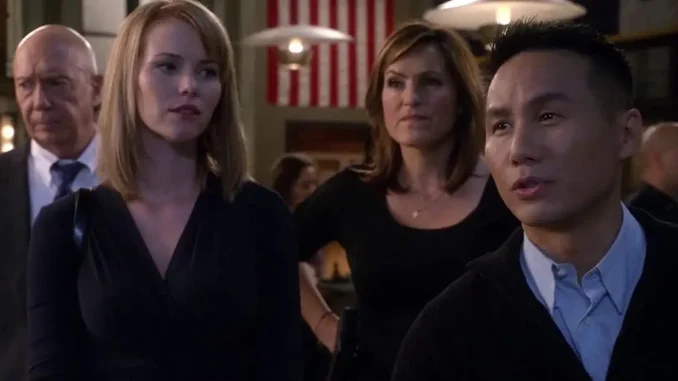
As a long-time fan of Law & Order: SVU, I’ve always been captivated by its blend of gripping crime drama and emotional depth. Characters like Olivia Benson have become iconic, and each episode serves up a thrilling quest for justice. For many viewers, the show isn’t just entertainment; it’s a glimpse into a world where justice is served swiftly and victims are believed. However, there’s one aspect that increasingly detracts from my enjoyment: the unrealistic portrayal of the criminal justice system.
The Illusion of a Perfect Justice System
A Glorified Version of Reality
One of the most striking features of SVU is its portrayal of the criminal justice system. From the detectives who passionately investigate heinous crimes to the Assistant District Attorneys (ADAs) relentlessly pushing for convictions, the show crafts a narrative that suggests a flawless system. In this universe, police officers always believe victims, and courtroom drama unfolds without the murky complexities of real life.
While this creates a compelling narrative, it glosses over the sobering reality many survivors face. For every episode where justice prevails, there are countless real-life stories of victims whose cases are dismissed or mishandled. The disparity between the show’s near-perfect outcomes and the actual statistics surrounding sexual assault cases is glaring.
The Harsh Reality of Sexual Assault Cases
According to RAINN, the statistics are disheartening: only 50 out of every 1,000 sexual assaults reported to the police lead to an arrest. Of those, just 28 result in a conviction, and only 25 end with the perpetrator serving jail time. Yet in the SVU universe, the detectives consistently achieve success, and justice is rarely out of reach. This narrative presents a dangerously idealistic view of law enforcement, especially for survivors seeking solace in these stories.
A Noteworthy Episode: “Debt”
Take, for example, Season 6, Episode 2, titled “Debt.” In this episode, Detectives Benson and Stabler investigate a human trafficking ring. Their relentless police work leads to a confession from a trafficker and a satisfying conviction. While the episode is undoubtedly gripping, it simplifies the complexities of real-life human trafficking cases, where survivors may struggle to cooperate due to trauma or threats.
Oversimplified Forensics and Legal Hurdles
The Quick Fixes of SVU
In many episodes, the show features swift DNA matches leading to rapid arrests and convictions. Season 10, Episode 22, “Zebras,” is a prime example. A DNA match leads to the swift capture of a serial rapist, offering viewers a gratifying resolution. However, this depiction oversimplifies the often tedious and frustrating process of forensic investigations and the multitude of legal hurdles involved in real-life cases.
Misleading Conviction Rates
While it’s true that SVU occasionally portrays flawed cases, it’s essential to recognize that the show’s near-perfect conviction rates create a misleading narrative. When a perpetrator is caught, the series often frames it as the norm, rather than highlighting the systemic challenges that victims face. This portrayal can foster a false sense of security among viewers, suggesting that justice is always attainable, when in reality, many survivors find themselves navigating a convoluted and often unsupportive system.
The “Copaganda” Debate
What is “Copaganda”?
The term “copaganda” refers to media that consistently portrays law enforcement in a positive light while ignoring systemic issues and misconduct. Over the years, SVU has faced scrutiny for its depiction of police as heroes, reinforcing an idealized version of law enforcement that often clashes with real-world experiences.
Heroic Portrayals vs. Systemic Failures
For instance, in Season 15, Episode 10, “Psycho/Therapist,” William Lewis, a recurring antagonist, manipulates the legal system to his advantage, but ultimately, he’s brought to justice through the tireless efforts of the police. While this portrayal can be inspiring, it obscures the systemic failures that allow many perpetrators to exploit the justice system. The notion that police will always act in the best interest of victims is both comforting and misleading.
A Complex Narrative
SVU often simplifies the narrative to present a binary choice: good cops versus bad apples. This framing minimizes the complexities of police behavior and accountability. Issues like racial profiling, underfunded investigations, and police misconduct are seldom addressed, leaving viewers with an incomplete understanding of the realities faced by victims.
The Emotional Appeal of SVU
Escapism Amidst Hard Truths
Despite its flaws, Law & Order: SVU resonates deeply with its audience, particularly among women. The show provides a form of escapism, portraying a world where victims are believed, their voices are amplified, and they have a shot at justice. This narrative can be empowering, offering hope to survivors in a system that often lets them down.
The Impactful Episode: “Heartfelt Passages”
In Season 17, Episode 23, “Heartfelt Passages,” the team confronts the grim realities of domestic violence. Sergeant Dodds sacrifices his life during a case, and the squad ensures the abusive husband faces maximum penalties. This episode gives viewers an emotionally satisfying journey, reinforcing the message that someone is fighting for victims.
Conclusion: A Love-Hate Relationship with SVU
While I cherish Law & Order: SVU for its emotional depth and compelling storytelling, the unrealistic portrayal of the criminal justice system has made it increasingly difficult for me to fully embrace the show. The tension between the idealized justice system depicted in the series and the harsh realities many women face is a compelling, yet flawed, aspect of the show.
While the series offers comforting narratives and a sense of hope, it’s essential for viewers to remain aware of the disparities between fiction and reality. The heroic portrayals of law enforcement, the glorified conviction rates, and the lack of acknowledgment of systemic issues create a complex viewing experience. As much as we want to believe in the fairness and efficacy of the justice system, the truth often tells a different story.
